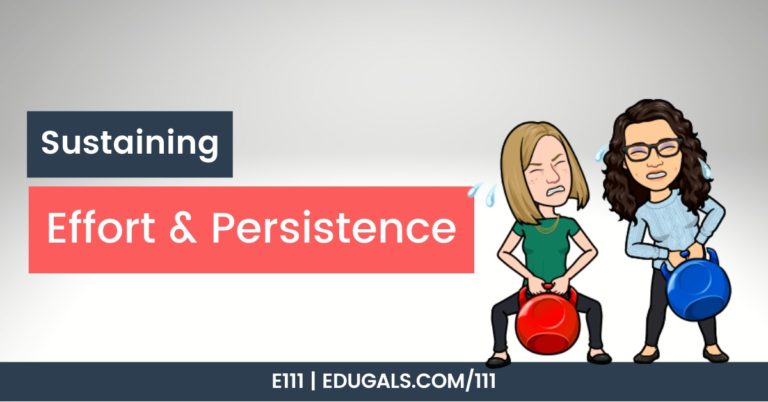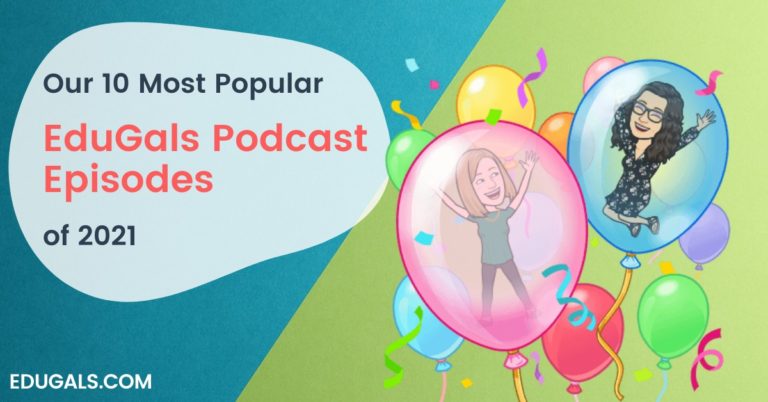[podcast_subscribe id=”7428″]
In this episode, we talking all about microlearning. We will share a definition of this term, and go into how you can adapt this corporate-world style of learning into your classroom.
If you like what you hear, then share this episode with a colleague or friend, and make sure you subscribe so that you don’t miss out on any new content! If you are able, consider supporting the show by buying us a coffee!
We would love to hear from you – leave a comment here, OR check out our FLIPGRID!

Show Notes
This week we are diving into microlearning: what it is, and how we can use it in education. We have done a little bit of learning about this topic, and we find it interesting. It fits in well with Modern Classrooms Project and mastery-based, yet it is different. It’s good that it’s different, as there really is no one-size-fits-all approach.
What is Microlearning?

Microlearning is essentially small pieces of learning. It is a strategy used to break down learning into small pieces, whether it be a skill, a concept, etc.
We have spoken quite a bit about mastery-based and the use of short instructional videos. These videos can actually be a form of microlearning.
Historically, microlearning has been geared towards the corporate environment and e-learning. Recently, Chris Nesi from the House of EdTech posted on Twitter that he recorded an episode about an aspect of microlearning, specifically about a tool that can be used in this approach. More specifically, he was focusing on the app 7Taps.
But really, what really caught out attention was that it aligned so closely with what we have learned about Modern Classrooms Project, and the idea of breaking up learning into smaller chunks with mastery checks to ensure understanding.
Benefits of Microlearning
We will begin by sharing some of the benefits of micolearning.
- Reduces cognitive overload
- Being able to access learning in small, manageable chunks will help to overcome the overload that often happens if faced with large amounts of learning in one go
- Breaks up learning into smaller bursts so that you can focus on one concept or skill at a time – keeps in manageable
- Why cognitive overload happens:
This is why roadmap work!!! @AshleyHalkum @MeganFerne @SamanthaShaffn2 #plsdproud pic.twitter.com/tdLYwt6u3J
— Stephanie Howell (@mrshowell24) January 28, 2022
- More flexible
- Gives students a better chance to retain their learning
- Allows students to work through at their own pace – can take the time that they need
- Engaging
- Shorter periods of time (or bursts) are far more engaging and easy to follow than the traditional period of lecture
- TikTok, Instagram Reels, etc are all short – this is how our students consume on social media, etc. – embrace that!
- Provides a focus for educators
- With shorter time periods, educators are forced to prioritize and focus on the most important aspects in a lesson
- Shorter bursts means less time for all the extras – gets rid of the extra fluff in a lesson!
- Identifies individual skills
- With shorter bursts of learning, it requires the educator to identify the skill that they want to target
- Makes you go back to the curriculum documents to isolate what skills students need – figure out what is required versus what you normally teach
- Big picture thinking
- Frees up time for student support
- Breaking up lessons into smaller pieces, and allowing students the time they need to progress through allows the teacher to be available to support students as needed
- Supports UDL
- Microlearning provides a variety of different ways for our students to learn (similar to a choose-your-own-adventure)
- Gives you permission to relax and use a variety of resources and not a single learning method
While there are many similarities between mastery-based learning (MCP) and microlearning, there are some differences as well. Microlearning has traditionally been considered a corporate world training strategy, which is quite different from a classroom.
There are also many different ways to implement microloearning. Check out this blog post entitled “The Top 11 Types of Microlearning for your Employees” – it shares a variety of different ways that microlearning can be implemented.
EdTech Tools for Microlearning
The next step in examining microlearning is to consider what edtech tools can be used to help implement this style of learning in the classroom. There are certainly many options, but here are a few that we have come up with:
- Google Forms (branching)
- Allows you to set up multiple sections with options for how students will learn (video, reading, graphic, listening, simulation, etc.)
- Google Slides
- Could set up a Slide deck with bookmarks or hyperlinks to the lesson options – one hyperlink for video, one for reading, one for podcast, etc. – students get to choose
- Make Your Own Chrome Extension
- Wanda Terral presented at ISTE all about how to create your own Chrome Extension
- Based off of Google Slides, and is supposed to be fairly easy to follow and create for yourself!
- 7Taps
- The app 7Taps is a paid tool, which makes sense for a corporate tool
- It is a web-based tool that can be used to create mini courses with a mobile first approach
- Visually it is simple (not overwhelming) and seems manageable to students and teachers
- Supports audio, video, link, quizzes, etc. – lots of neat tools!
- could be created with Google Sites, Genial.ly or even Slides
- Genial.ly
- Genial.ly could be a great alternative to 7Taps
- Can create presentations and set up dimensions to be mobile friendly (approximately 400px wide x 750px high)
Tips for Microlearning
Now that we have addressed what microlearning is, the benefits of this teaching strategy, and some edtech tools that can be used to implement this style of learning, here are some tips to help you get started.

- Use the tools you have
- There is no need to spend a bunch of money on a tech tool – use the tools that you already have access to – strip them down and make it work for your purpose!
- Optimize for mobile devices
- Many students rely on their smartphones to access and complete work
- Focus on skills, not just knowledge
- We have said it many times before, but it’s worth repeating! It’s all about the skills.
- Know your learners
- Find ways to engage your learners that honours who they are and their education journey
- Make these microlessons as simple as possible to ensure that all students can access the language and content
- Images will help support learning, so try to include images that will help students to make meaningful connections to the lesson
- If using videos, ensure closed captions are an option!
- Stay on task!
- Make sure that you stay focused on a single skill, and that you don’t stray too far from the focus of that lesson
- Use realistic examples, stories or situations
- It gives context to what students are learning
- Use diverse examples – make sure your students see themselves reflected in the examples that you use
- Add social elements
- Get students to connect and collaborate with one another
To read more tips about how to implement and enhance microlearning, be sure to check out this blog post from Capytech.





